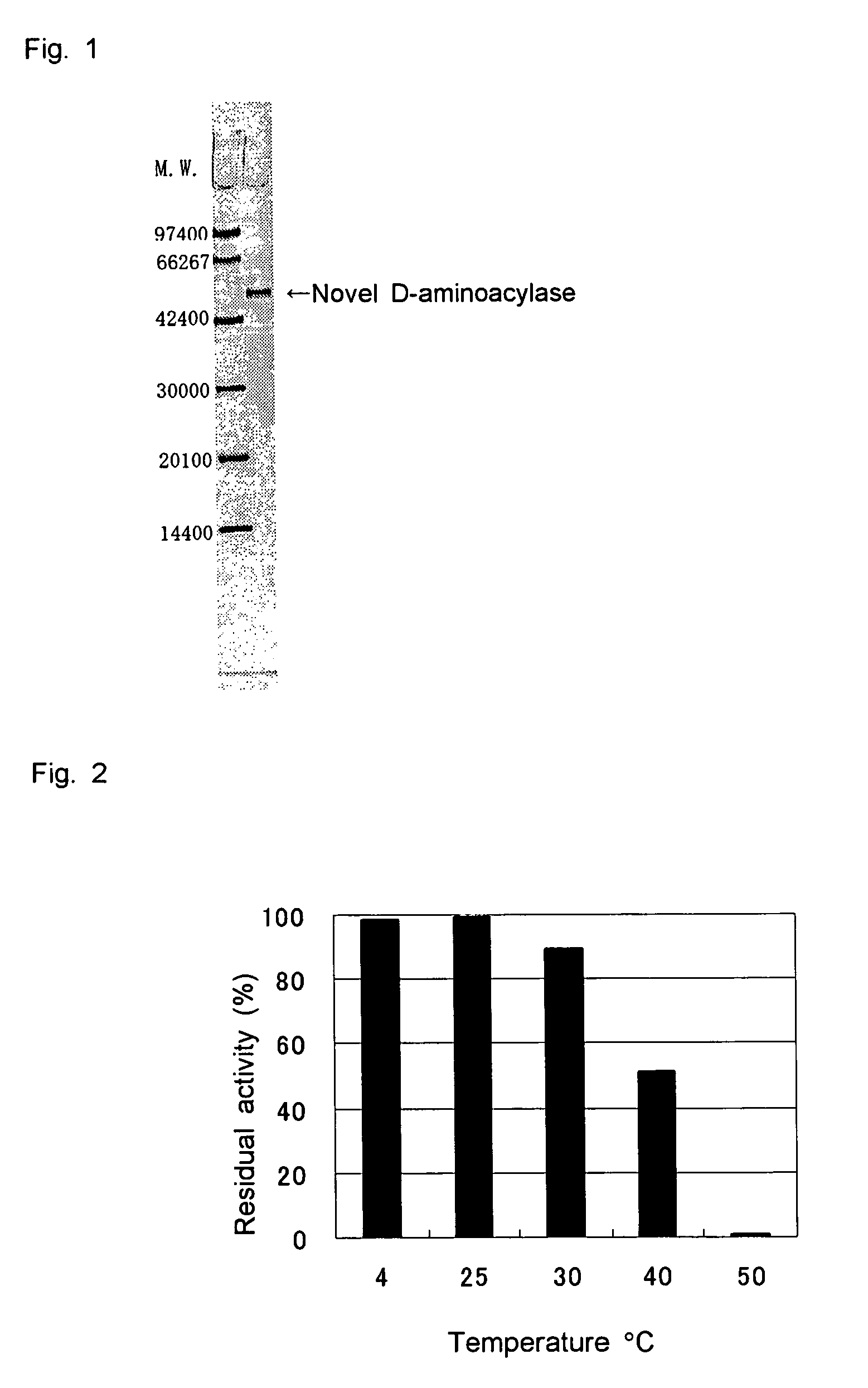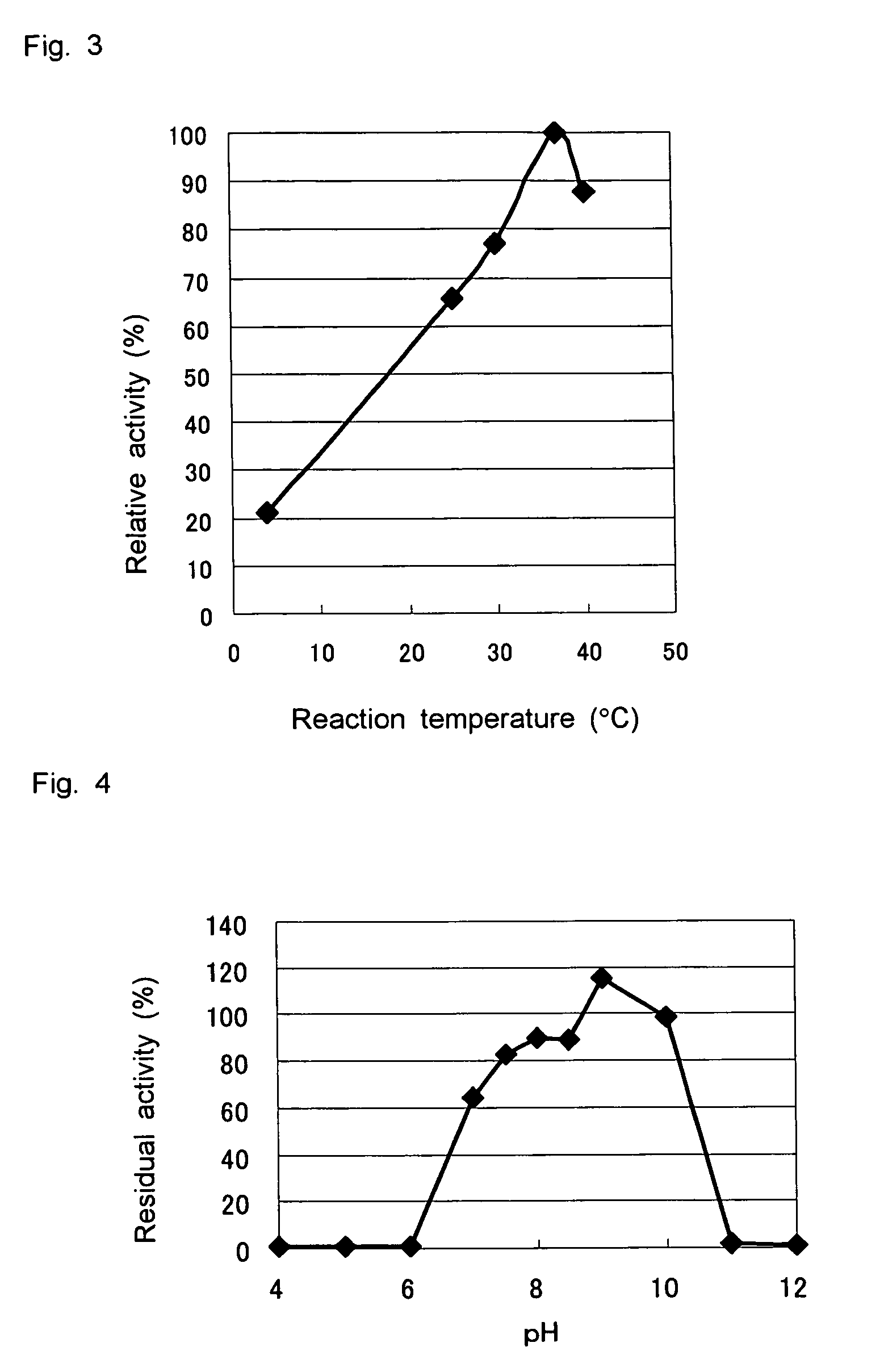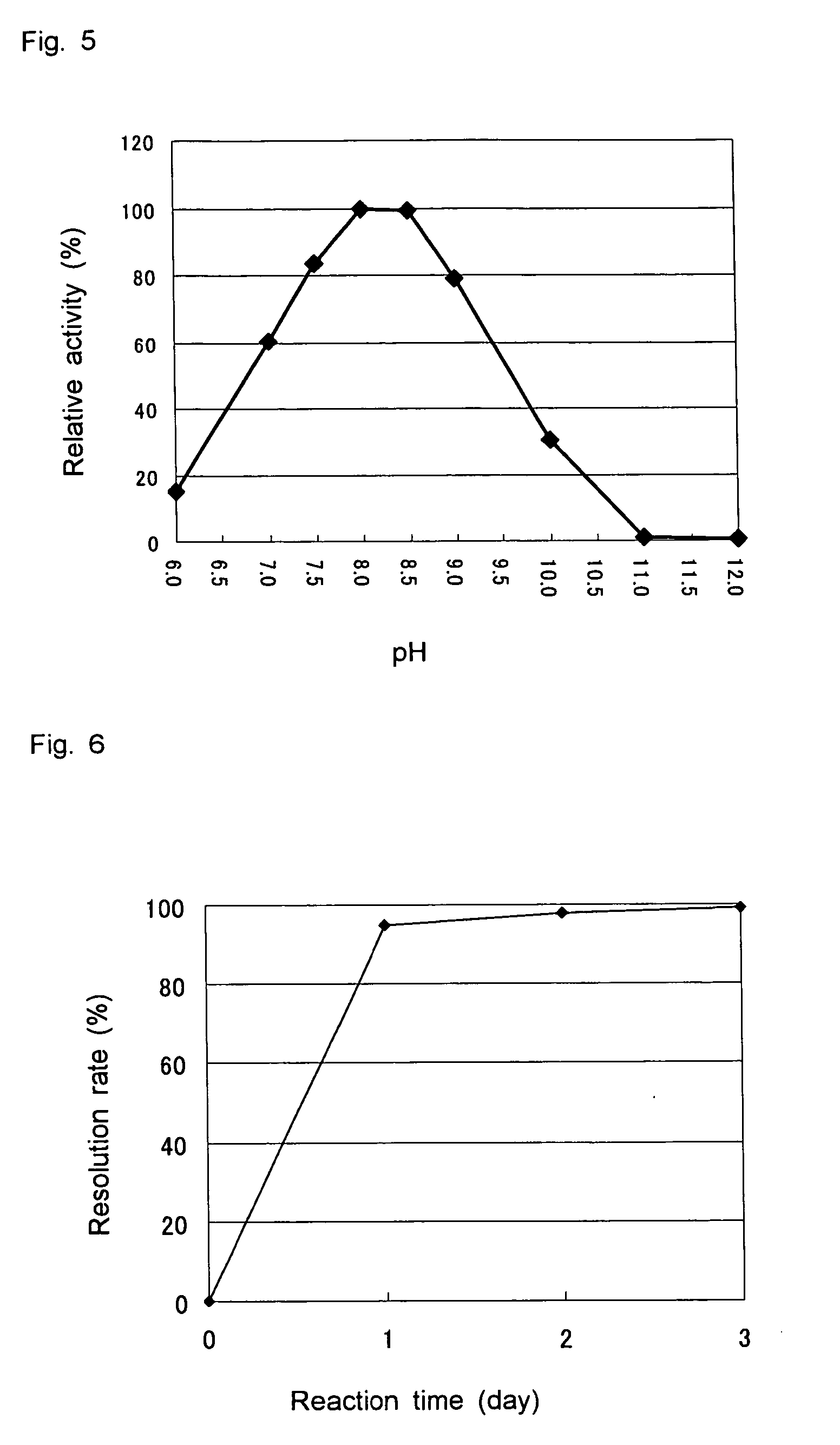D-aminoacylase
a technology of d-aminoacylase and d-aminoacylase, which is applied in the field of new d-aminoacylase, can solve the problems of limited cost and production amount, and the difficulty of producing a wide variety of d-amino acids at low cost by using such known d-aminoacylases, and achieves high substrate specificity
- Summary
- Abstract
- Description
- Claims
- Application Information
AI Technical Summary
Benefits of technology
Problems solved by technology
Method used
Image
Examples
example 1
Isolation of Defluvibacter sp. A131-3 Strain
[0115] Soil was collected at Daiichi Pure Chemicals Co., Ltd., Iwate factory, and the collected soil was treated as described below to recover the bacterial cells.
[0116] A small amount of the soil was added to a culture medium at pH 8.5 containing 0.2% ammonium nitrate, 0.2% potassium dihydrogen phosphate, 0.1% disodium hydrogen phosphate, 0.05% magnesium sulfate heptahydrate, and 0.2% N-acetyl-D,L-valine (an inducer), and the medium was incubated at 30° C. in a test tube with shaking. Next, a culture solution was plated out (inoculated) to a plate culture medium of the same composition additionally containing 2% agar, and the plate culture medium was incubated at 30° C. to separate the microorganisms that had grown in the medium.
[0117] The thus separated microorganisms were again cultivated in the culture medium of the same composition in a test tube with shaking to select a microorganism which has a D-aminoacylase-producing ability di...
example 2
Production of D-Aminoacylase
[0125]Defluvibacter sp. A131-3 strain was cultivated in 20 L of the medium at pH 8 prepared by adding 0.1% yeast extract powder D-3 (manufactured by Wako Pure Chemical Industries, Ltd., Code: 390-00531), 0.1% polypeprone (manufactured by Wako Pure Chemical Industries, Ltd., Code: 394-00115), and 0.05% sodium chloride to the culture medium used in Example 1. The cultivation took place in an aerated jar fermenter at 30° C. agitated at 150 r / min for 27 hours. At the completion of the cultivation, turbidity (ABS 660 nm) was 1.52, and pH was 7.75.
[0126] After the cultivation, the bacterial cells were collected by centrifugation in a refrigerated centrifuge (manufactured by Hitachi Koki Co., Ltd.) at 4000 r / min for 60 minutes, and the collected cells were washed with 20 mmol / L Tris-HCl buffer solution (pH 8), and again centrifuged. The thus collected bacterial cells of 112 g were cryopreserved at −80° C.
[0127] The cryopreserved bacterial cells were thawed, a...
example 3
Purification of D-Aminoacylase
[0129] The crude enzyme solution was filled in a dialysis tube and dialyzed against 20 mmol / L Tris-HCl buffer solution (pH 8) containing 0.1 mol / L sodium chloride in a low temperature chamber (4° C.) for one day with stirring, while replacing the buffer solution several times. After completing the dialysis, the dialyzate was centrifuged at 8000 r / min and at 4° C. for 60 minutes on a refrigerated high speed centrifuge (manufactured by Hitachi Koki Co., Ltd.) to obtain a supernatant (342 mL).
[0130] One third of the dialyzate was purified as described below. A 114 mL portion of the dialyzate was introduced into TOYOPEARL SuperQ-650M column (manufactured by Toso Corporation) (4.4 cm diameter×37.5 cm) that had been equilibrated with 20 mmol / L Tris-HCl buffer solution (pH 8) containing 0.1 mol / L sodium chloride for adsorption of the enzyme. Next, the column was washed with 1500 mL of 20 mmol / L Tris-HCl buffer solution (pH 8) containing 0.1 mol / L sodium chlo...
PUM
| Property | Measurement | Unit |
|---|---|---|
| molecular weight | aaaaa | aaaaa |
| pH | aaaaa | aaaaa |
| temperature | aaaaa | aaaaa |
Abstract
Description
Claims
Application Information
 Login to View More
Login to View More - R&D
- Intellectual Property
- Life Sciences
- Materials
- Tech Scout
- Unparalleled Data Quality
- Higher Quality Content
- 60% Fewer Hallucinations
Browse by: Latest US Patents, China's latest patents, Technical Efficacy Thesaurus, Application Domain, Technology Topic, Popular Technical Reports.
© 2025 PatSnap. All rights reserved.Legal|Privacy policy|Modern Slavery Act Transparency Statement|Sitemap|About US| Contact US: help@patsnap.com



